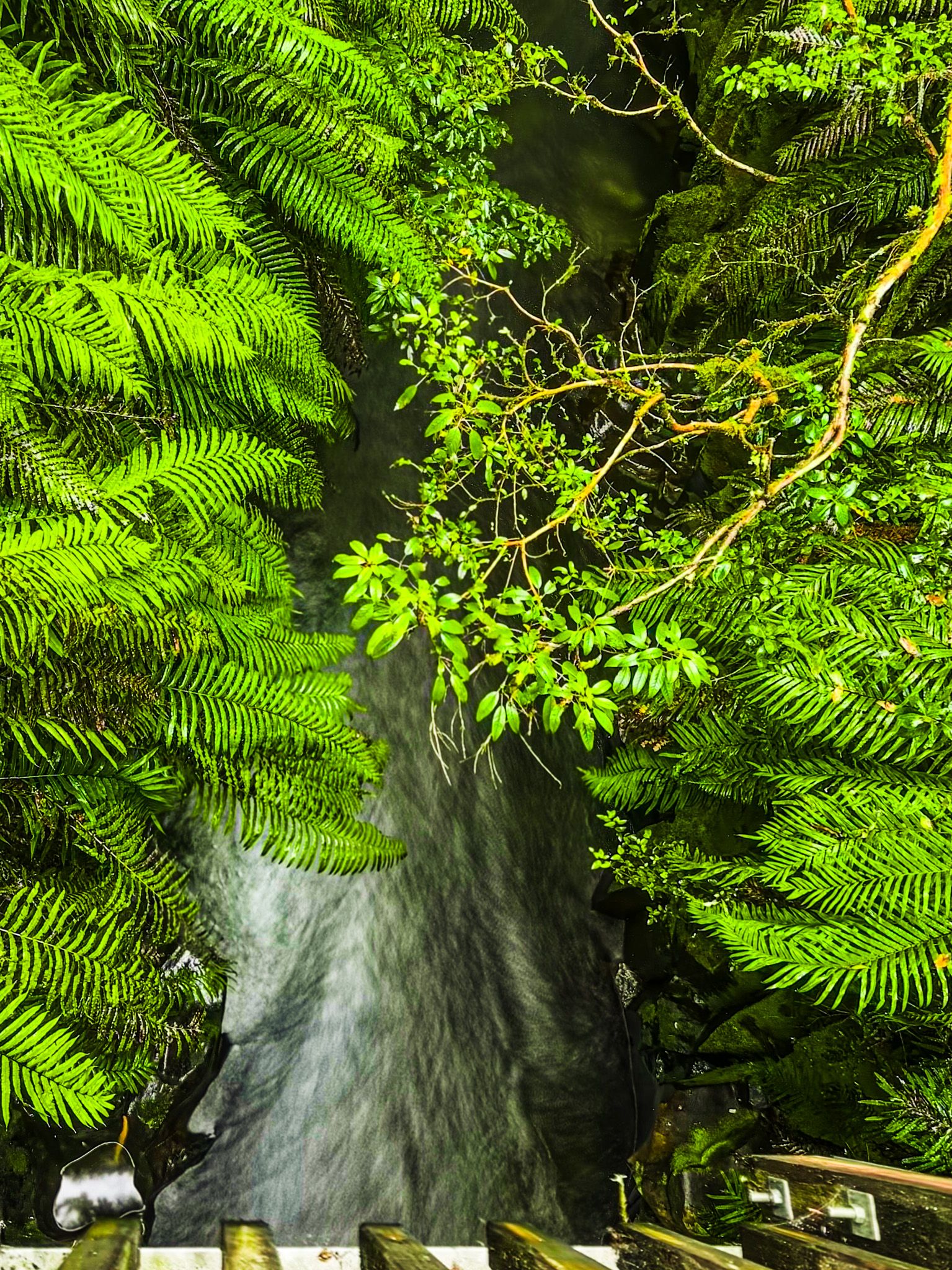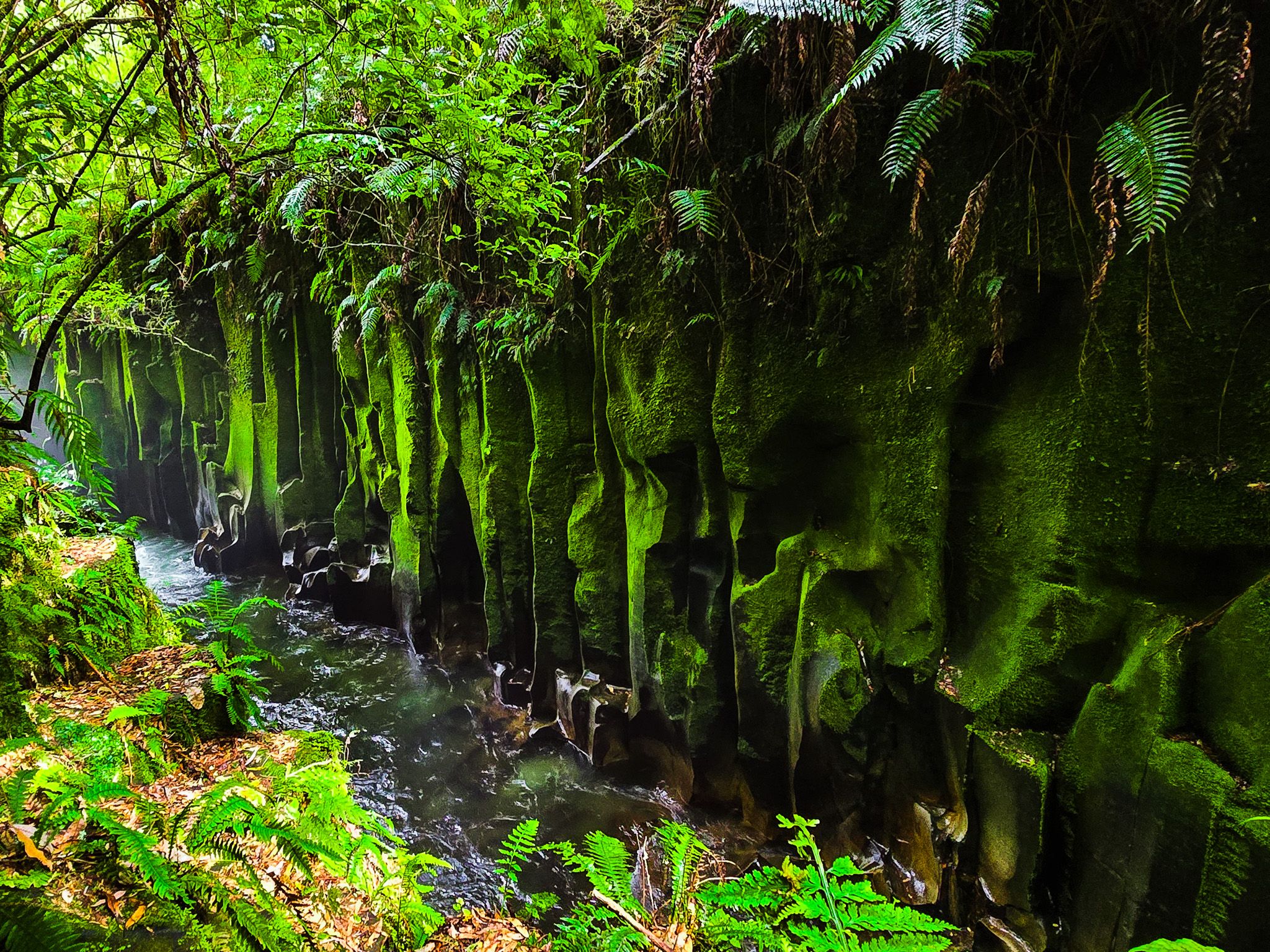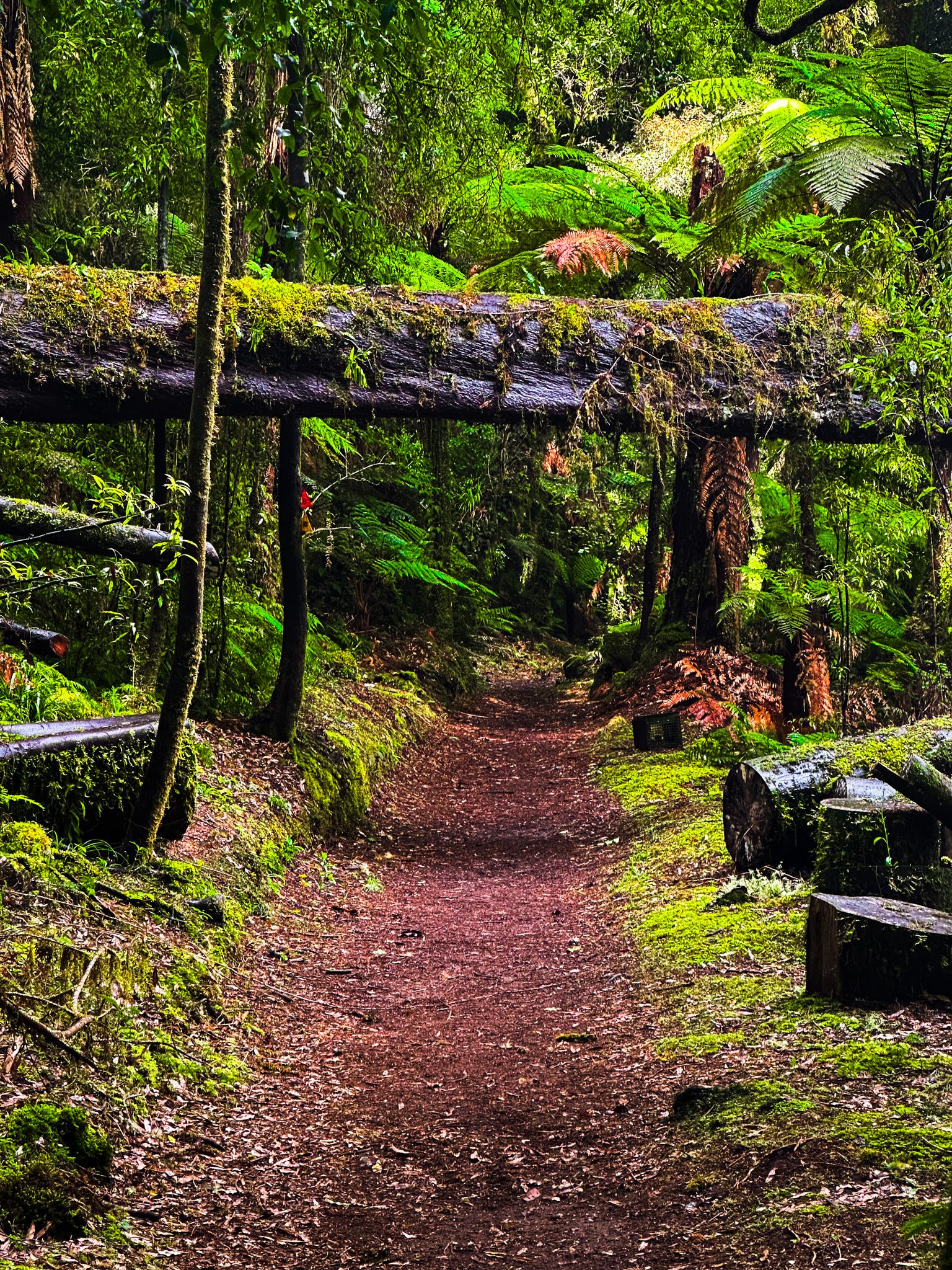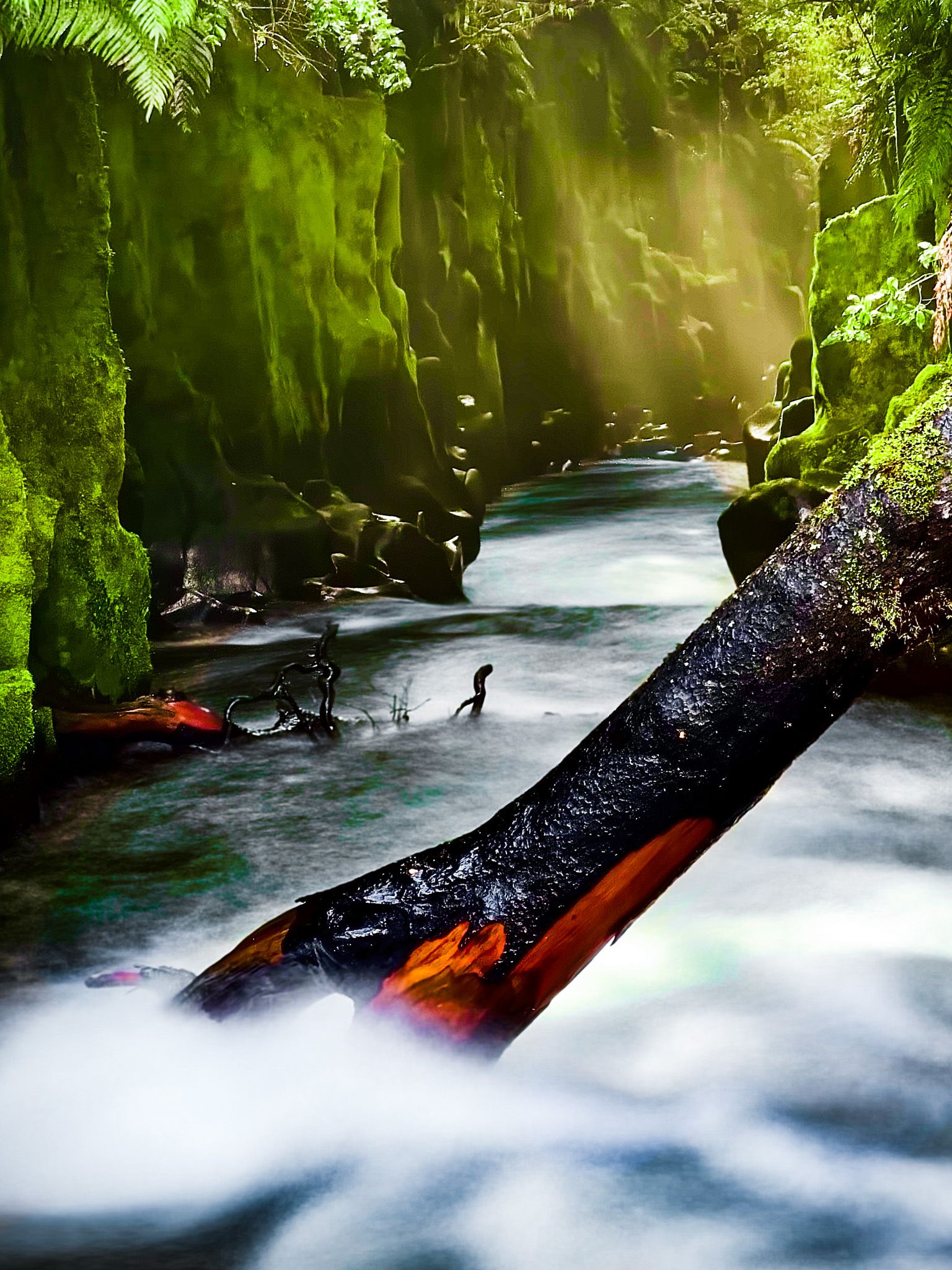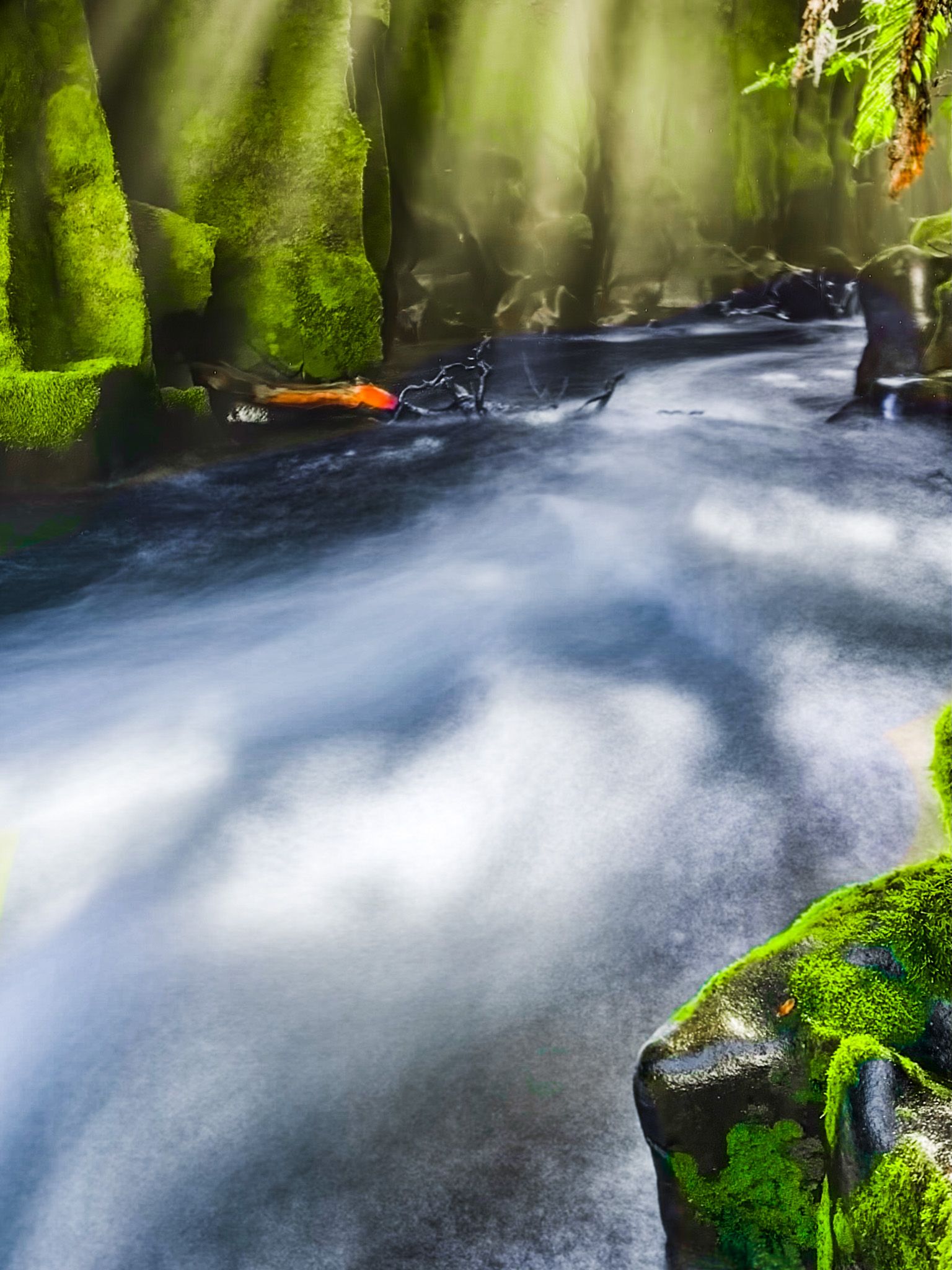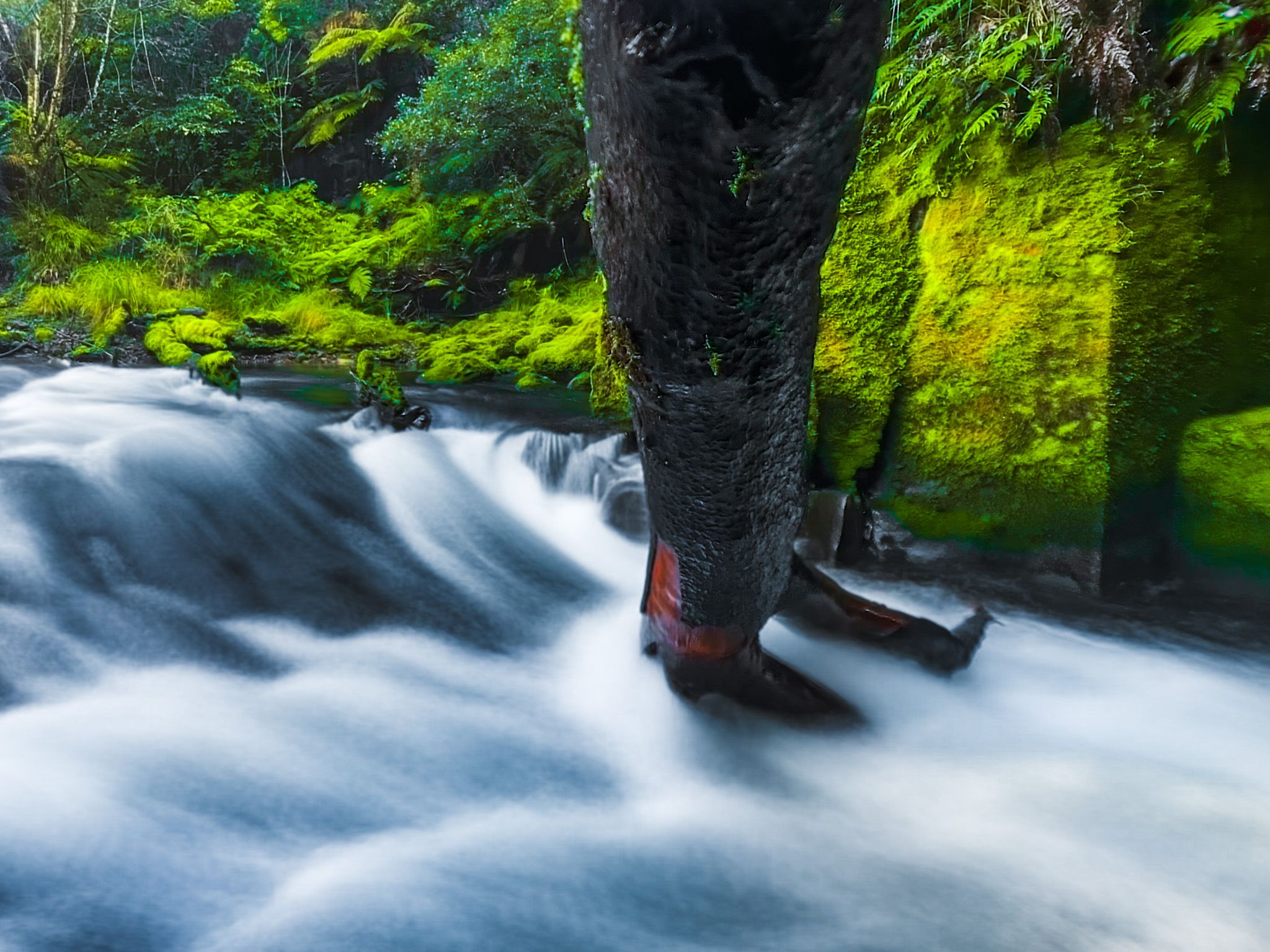Discover Te Whāiti Nui a Toi Canyon
Te Whāiti Nui a Toi Canyon is a captivating natural feature located in Whirinaki Te Pua-a-Tāne Conservation Park. The Whirinaki River carves through this narrow canyon, surrounded by intensely green rainforest. The canyon walls, adorned with moss and lichen, create a striking display of light and colour. It is tricky to get a good view of the canyon, but it is very rewarding when you do.
Walking the Whirinaki Waterfall Loop Track
To explore the canyon, start at the main car park at the end of River Road. From here, it is a short 30-minute return walk along the Whirinaki Waterfall Loop Track to the river and canyon. Continuing on the entire loop is about a 3-hour hike.
As you near the river, the west side of the loop leads south. Cross the bridge towards the east side of the river for an initial sense of the canyon, though shrubs may obscure the view. For a clearer perspective, continue along the track on the east side where the forest thins, allowing you to approach the canyon's edge. Be cautious of the sheer 10-metre drop if you decide to venture closer.
A Safer Route to the Canyon
For a safer approach, continue further down the track. After passing under a prominent log, you can push through the shrubbery to reach the river near the canyon's entrance. A small beach provides access, and you'll know you're in the right spot if you spot the defunct toilet. Be mindful of the ongaonga, a native stinging nettle, near the river's edge.
Cultural Significance of the Canyon
The name "Te Whāiti Nui a Toi" translates to "the great canyon of Toi." The local iwi, Ngāti Whare, are descendants of Toi Te Huatahi, an early Māori ancestor in the Bay of Plenty and Coromandel. Toi's tribe, Te Tini o Toi, meaning "Toi’s multitudes," has deep roots in the area.
Wharepakau, a descendant of Toi, led his family to the Whirinaki region, where they defeated the local Te Marangaranga with his nephew Tangiharuru. The iwi adopted the name "Ngāti Whare" to honour their founder, Wharepakau, while the canyon was named after his ancestor.
Getting to Te Whāiti Nui a Toi Canyon
The main car park for Whirinaki Te Pua-a-Tāne Conservation Park is at the end of River Road. To get there from Rotorua, take State Highway 38 southeast through the Kaingaroa Forest to Murupara. From there, follow Te Whaiti Road to Te What, where you turn southeast onto Minginui Road. At Minginui, head west over the river, then turn south onto River Road and follow it to the main car park.
There are various other short and multi-day walking, hiking, and cycling options in the conservation park. Short options include Arohaki Lagoon Track, Sanctuary Loop Walk, Werimu Merito Reserve and Mangamate.

